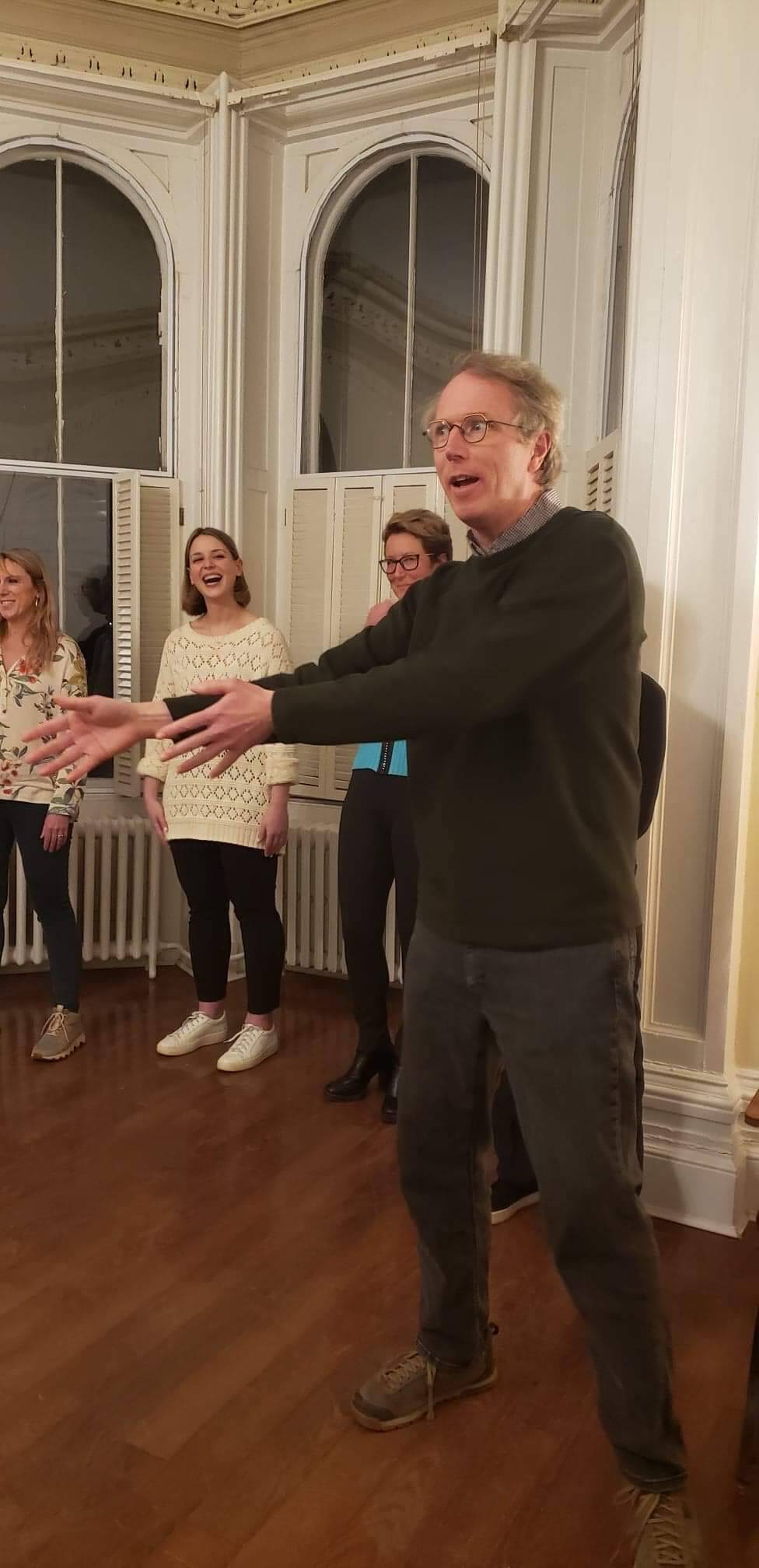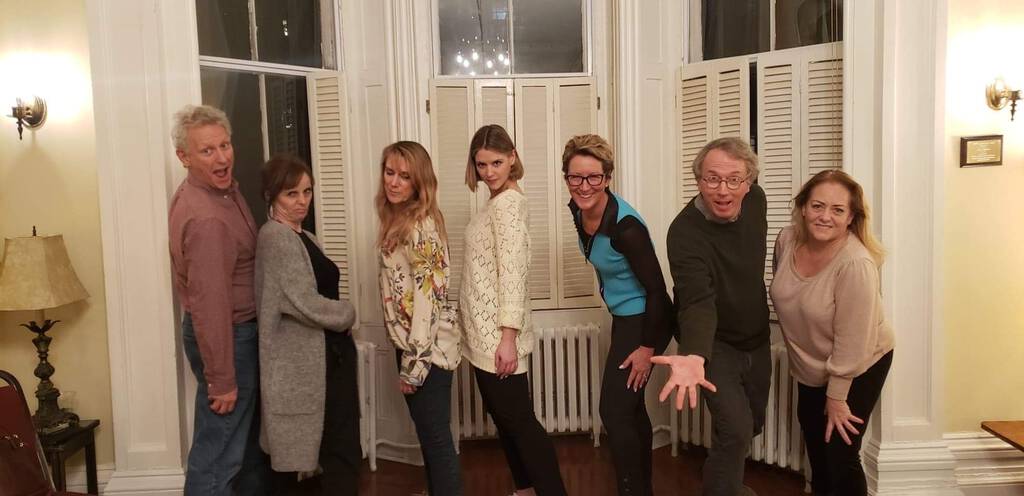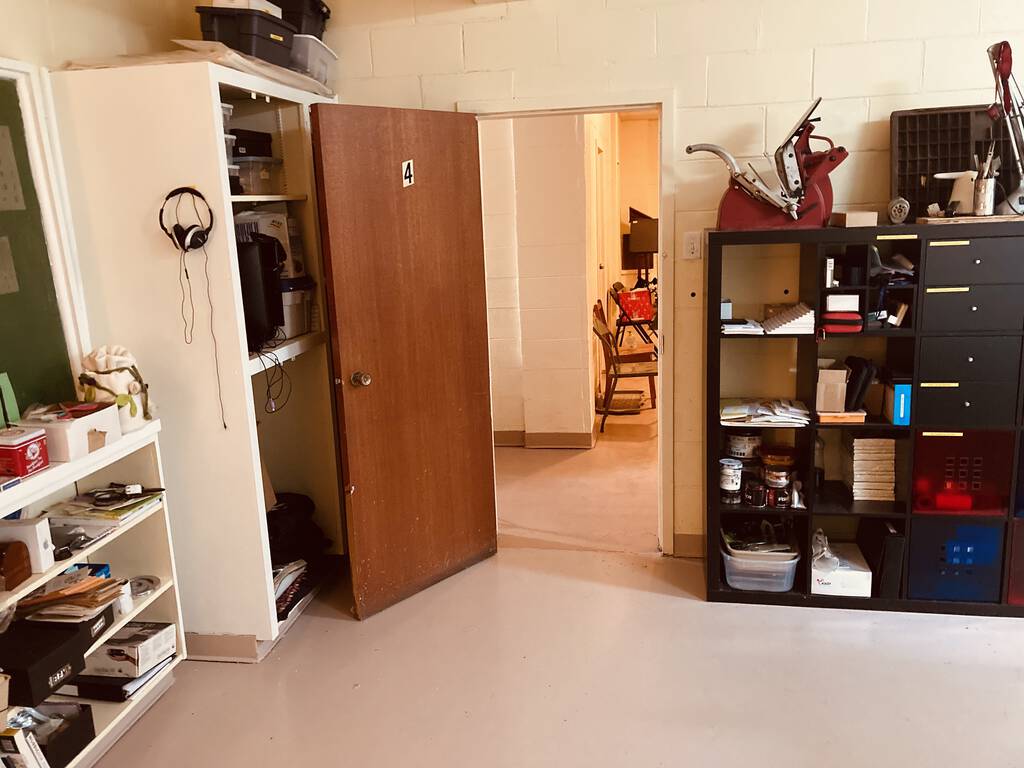Stephen Southall has been my friend for 35 years, since we met in the summer of 1987 in Peterborough.
Over the years we’ve known each other I’ve spent time with many of the Southall clan—Carol and George, deeply interesting parents, had six kids, all of them deeply interesting people. They are a remarkable bunch.
For the past 13 years Stephen has made a household for his mother a powerful, inspiring act of service.
Stephen’s family, led by his niece Carol, have organized a GoFundMe campaign to send him to Las Vegas to play in the World Series of Poker, a trip that would serve both to scratch his poker itch—he is a passionate student of the game—and to give him much-needed, much-deserved respite.
Perhaps the greatest thing to come from this fundraiser is this video, which may be the most singularly Southall thing ever produced.
As a favour to me, and as a way of honouring Stephen’s service, please consider throwing in $20 to the effort; your stake won’t solve what ails the world, but it will breathe life into the spirits of a dear old friend.
I rode public transit this morning for the first time in almost three years: the early hour meant the bus was deserted—just me and two others—and the icy sidewalks, left over from Monday’s snowfall, meant the bus was a welcome alternative to the slip-sliding across town I would have had to negotiate otherwise.
I love the bus. I’d forgotten that. It was good to be back.
And there was wifi. Fast wifi.

A montage of photos of the number 56, from the Flickr group No. 56
I turn 56 years old today. Two times twenty-eight.
If I live as long as my great-great-grandfather Than–97–then I still have 41 years left.
If I live as long as my father–84–then it’s just 28 years. Not tomorrow, but closer to the end than the beginning.
(It’s also the 20th anniversary of the first time I wrote about my birthday here).
Back in November, I posted this:
I’ve realized recently that the process of supporting Catherine through 6 years of living with, and ultimately dying from, cancer made me feel like I was 75 years old: all that time in hospitals and hospice, all that fragility, all that ever-closer end.
But I’m not 75 years old, I’m 55 years old. And getting a handle on that, and remembering how to do that, that’s a thing.
Now, 150 days later, I’m 56 years old, and I find myself in a lovely new relationship, I’m meeting new people, experiencing new things, I have a new spring in my step.
I’m looking forward more than backward, toward more than inward or outward.
At the same time, as I write, I feel surrounded by COVID, with new reports of positive cases marching ever-closer to home, and nary a day going by without a friend, or friend of a friend, declaring they’re isolating. Add that to the foot of snow that fell out of nowhere yesterday, to say nothing of the ongoing war in Ukraine, home to one quarter of my ancestors, and it’s a stressful, chaotic context to get a year older in.
In the midst of this, an insightful blog post from Rebecca Toh showed up in my feedreader:
These days I’ve been trying to change, but I’m also trying to be as gentle about it as possible.
Self-improvement can be insidious and a source of stress, because for many people, self-improvement is actually self-dislike in disguise. If we’re not careful, we can spend years on the self-improvement treadmill trying to reach our goals but feel utterly, utterly empty at the end.
There is simply no imaginary day in the bright future ahead when we’d wake up in the morning transformed, an ideal version of ourselves.
There is only transforming in the here and the now.
Which also means we have to do the work NOW and not tomorrow, but for us to truly transform, we have to do it with an attitude of non-striving, of not wanting to control the outcome exactly.
This is what I mean by trying to change, but also trying to be as gentle about it as possible.
I woke up this morning feeling groggy and a little out of sorts. The day was made brighter by the ones I love, and by friends old and new.
There is simply no imaginary day in the bright future ahead when we’d wake up in the morning transformed, an ideal version of ourselves.
Today is the day.
On Monday night our small group of improv class students performed our first show for other people. A small group of other people. And friends and family other people at that. But other people nonetheless.
It did, as our coach Laurie Murphy predicted it would, kick us up to another level of focus. It was thrilling and (at least in the moments leading up to it) butterfly-inducing.
I am so happy I didn’t slink away from the opportunity.
Here’s me, toward the end, part of a “rant” we each performed in series; the prompt from the audience was “summer,” and my opening line being “What the fuck is up with parades!?”. I fear that if video of my performance is leaked, I may be rendered ineligible for membership in (or fire service from) the North River and Crossroads Fire Departments, as there was more than a little “and what’s the deal with the fire trucks?!” content woven into my ranting. The “rant” has been where I’ve been at my least comfortable since I started going to classes in November, and I was happy with where I landed on Monday: I gave it my all.

Here’s a photo of our hearty gang of improvisers:

Laurie is back at it on Monday nights next week, 7:00 p.m. to 9:00 p.m. at The Haviland Club. $30/night. It’s a drop-in format, so you can drop in on any Monday. And, as I am the shining example of, you need neither experience for a surplus of confidence to try.
In the liner notes to No.6 Collaborations, Ed Sheeran writes:
This record was based on one I made in 2010 called No.5 Collaborations Project with a load of artists I liked. I had a little folder on my laptop called No.6 Collaborations Project, so I started ringing up people who I wanted to work with. I think the first was Camila, and then it sort of opened up from there. I based myself in Nashville, set up a studio there and started making songs, so whenever an artist passed through Nashville I would hit them up and they would come to the house. We’d make a song, and the record was made over the course of three months, with lots of people I like. I really stepped out of my comfort zone on some stuff. It was very fun and I hope you enjoy it. —Ed
I like that idea a lot, and might try it in the print shop. Indeed it’s something I’ve done with a few passers-through over the years—Jonas in 2018, Laurie and Art in 2021—and it’s always been fun, a burst of that special kind of from-away energy.
So if Charlottetown is your destination this year, ping and we’ll print something together.
Twenty-five years ago my grandmother was planning a visit to PEI for the first time. She’d been diagnosed with pancreatic cancer, so was operating under “if not now, when?” rules.
My only significant failure as a human being, in my grandmother’s eyes, was that I didn’t have a bed.
After leaving my room at Champlain College at Trent University I slept on a series of (admittedly lumpy, uncomfortable) futons for a decade. In her eyes she hadn’t worked through the Depression for 25 cents an hour to send my father to university to raise a child who didn’t sleep on a proper bed.
If she was going to come and stay with us, in other words, a bed needed to be secured. She could sleep on it during her visit, and then it would become our bed.
I procrastinated.
At the last minute I called up the bed place in Cornwall and ordered up a Queen bed with a split box, the only bed that could be navigated up the tiny stairs of our small house in Kingston. The bed delivery truck arrived on the morning of the day that my grandmother’s flight arrived in the afternoon.
She was impressed. Her efforts had not been in vain. We had a delightful visit.
She returned home to find that she didn’t have pancreatic cancer at all and was, in fact, perfectly healthy.
The bed remained. Olivia was conceived on it. It moved to town with us. It was a good bed. Solid. Comfortable. It served us well. Eventually it became the guest bed, as we acquired a larger king-size bed for ourselves. And then it became Olivia’s bed.
It started to get lumpy. The frame collapsed underneath it (something Olivia forgot to tell me; she slept at a 10 degree angle for months without me knowing) and it got set in the floor.
Another two years passed.
“You know, Olivia could really use a new bed,” L. told me a few weeks ago (her fresh eyes are proving helpful in so many ways!).
And so I ordered up a new bed, an exploding bed from Endy, the same model I bought last year that’s proved comfortable to all who’ve slept on it.
The new bed arrived. We set it up. Olivia has been sleeping well. Better.
What of the old bed? Too big for the Kia Soul. Removalists wanted $75 to cart it to the waste depot.
And then a friend with pickup truck appeared. I crunched the mattress and box springs down the stairs by myself, using gravity to good end. Loaded them up in the truck.
And off went the bed.
It’s been a week of much unburdening.
I’m running one small cell in a global COVID testing panopticon, part of history’s greatest biosurveillance operation.
Olivia needs to be COVID tested twice-weekly as a condition of participating in the day program at Stars for Life. On top of this, our off-Island travel last week brought with it a days 0, 2, and 4 testing requirement on return.
So there’s been a lot of swab, dip, swoosh, squeeze, drip, “Alexa, set a timer for 15 minutes“ action here of late. All of it negative to date.
As a student of design and communications I’m fascinated by the test kit variants: the different ways of providing the testing medium, the different swabs, the instruction sheets (varying from a single badly-photocopied sheet to detailed multicoloured booklets). Some kits use three drops, some four, some six. Some instructions show the swab painlessly tucked in the nose, some in contact with the brain stem.
I’ve been trying, so far in vain, to make contact with the Korean provider of beautifully-designed silica gel packs in one of the variants. I just want to laud their attention to detail.
And these kits need to be usable by anyone, regardless of literacy level, mother tongue, disability. What an enormous challenge.
With the world’s testing literacy increased by all this flurry, I wonder if we might ramp up parallel citizen-science operations on other topics: water quality, shoreline erosion, traffic counting.
In the meanwhile, more swab, dip, swoosh, squeeze, drip, “Alexa, set a timer for 15 minutes.“
When Catherine died in January of 2020, she left her studio–a room in the basement of St. Paul’s Parish Hall, right across the hallway from my office–much intact, thus leaving me to confront a lifetime of her tools, materials, supplies, finished and half-finished art and craftwork. It took me more than a year to whittle this down, to sort and box and bin, to find new homes for things, to empty the room for them who would come along next. I did it.
But what remained was a cache of the unsortable, tucked away in the back corner of my office: artwork, tools I thought I might use, things I couldn’t bear to throw away that I found no takers for. Over the last 18 months this cache started to feel unwieldy: it was both a psychological avatar for the unresolved, and a physical mountain that was preventing me from opening the back door to my office and letting the air circulate.
On Monday night at improv class one of our exercises was a “rant,” a prompted opportunity to let out a helping of latent rage. The timing was right for me: I found I had a lot to unleash, and the effect was healing, purgative. I greeted Tuesday morning with a fresh spring in my step, and decided, on arriving in the office, that I would, at long last, tackle the mountain.
Doing so required a leap, letting go reverence for Catherine’s things and, in the process, letting go of the resentment I’d long held for her leaving me as custodian of her lifetime accumulation of stuff.
Over the course of 4 hours I sorted and boxed and rolled and triaged. I broke a glass jar (by accident, although it felt good). I ripped to shreds a painting that I’d never ever liked. I committed small acts of artistic sacrilege, and in doing so I took agency, and stopped feeling weighted down by stuff mountain.
I dropped a big collection of things off at the thrift shop, a dozen pairs of Catherine’s eyeglasses frames off at my optician for donation to the Lions Club. I left some zinc and copper at the metal recycler for pricing, and a bunch of old digital cameras and cell phones of Catherine’s at the electronics recycler. A few bags of garbage in the black bin.

If you look carefully at the photo of my loaded car you will see one of Catherine’s spinning wheels there, a treasured object of hers and one that, despite two years of trying, I’d been unable to find a new home for.
I decided I’d done my part, that I was no longer responsible for treating it as a sacred object, and it too went to the thrift shop, where I hope it will find a new home.
The effect of all of this was important: I feel unburdened by my custodial obligations, by the need to revere Catherine’s things, even in the absence of true reverence. None of this means that I seek to cast out memories of Catherine, that I don’t have an permanent and important place for her in my heart. But being able to admit that, co-resident inside me, was an unhealthy knot of complicated feelings, feelings that found physical manifestation in an immovable pile of objects, that’s been very helpful.
And it’s left me with a cleaner office, and an open door.

 I am
I am